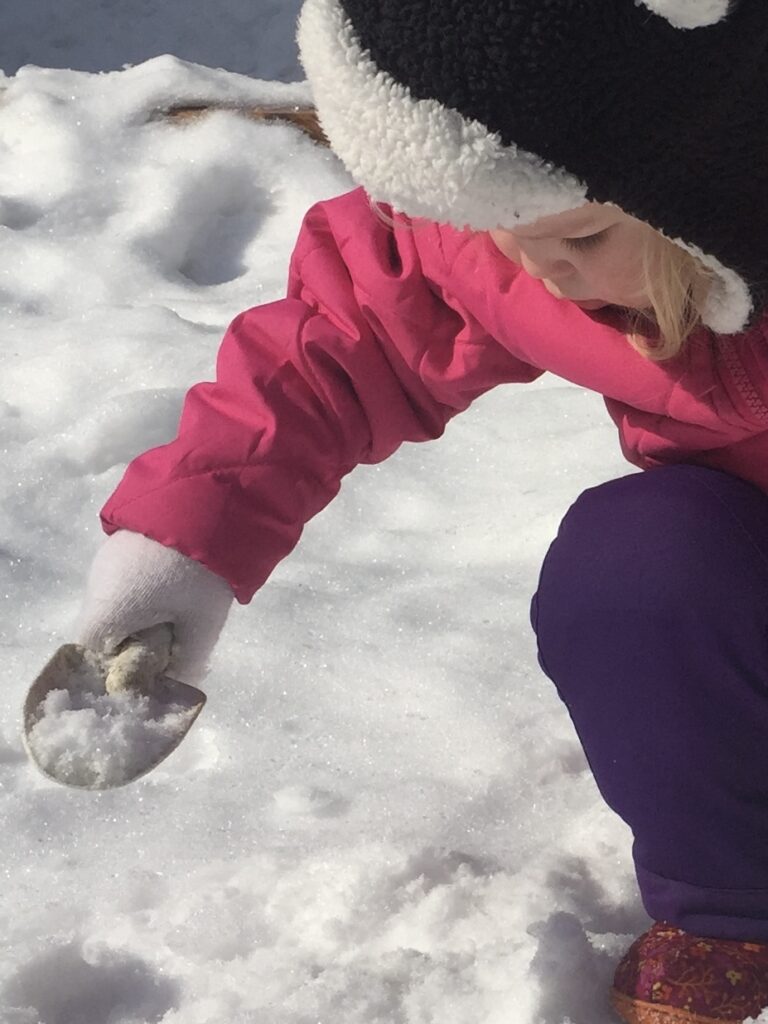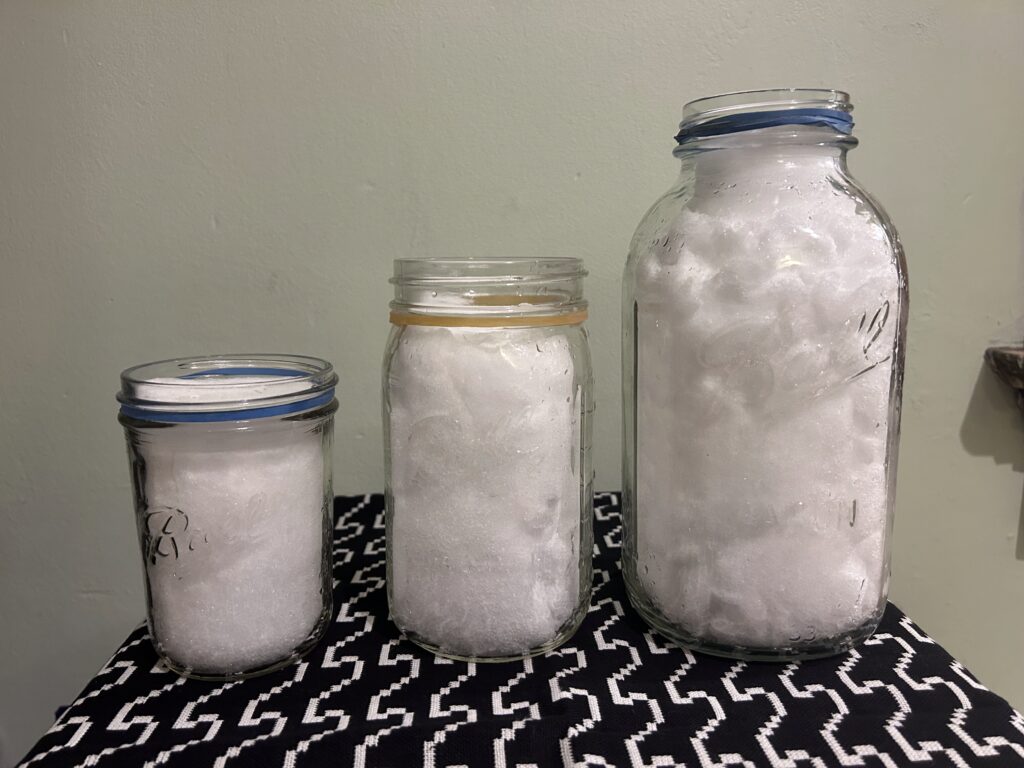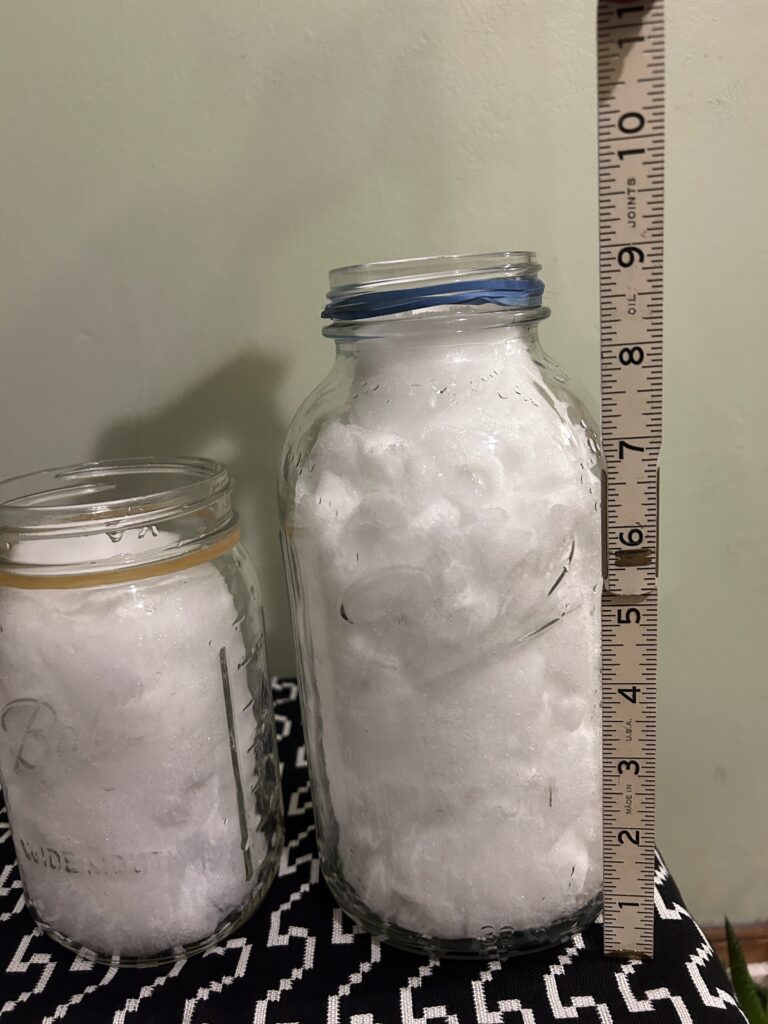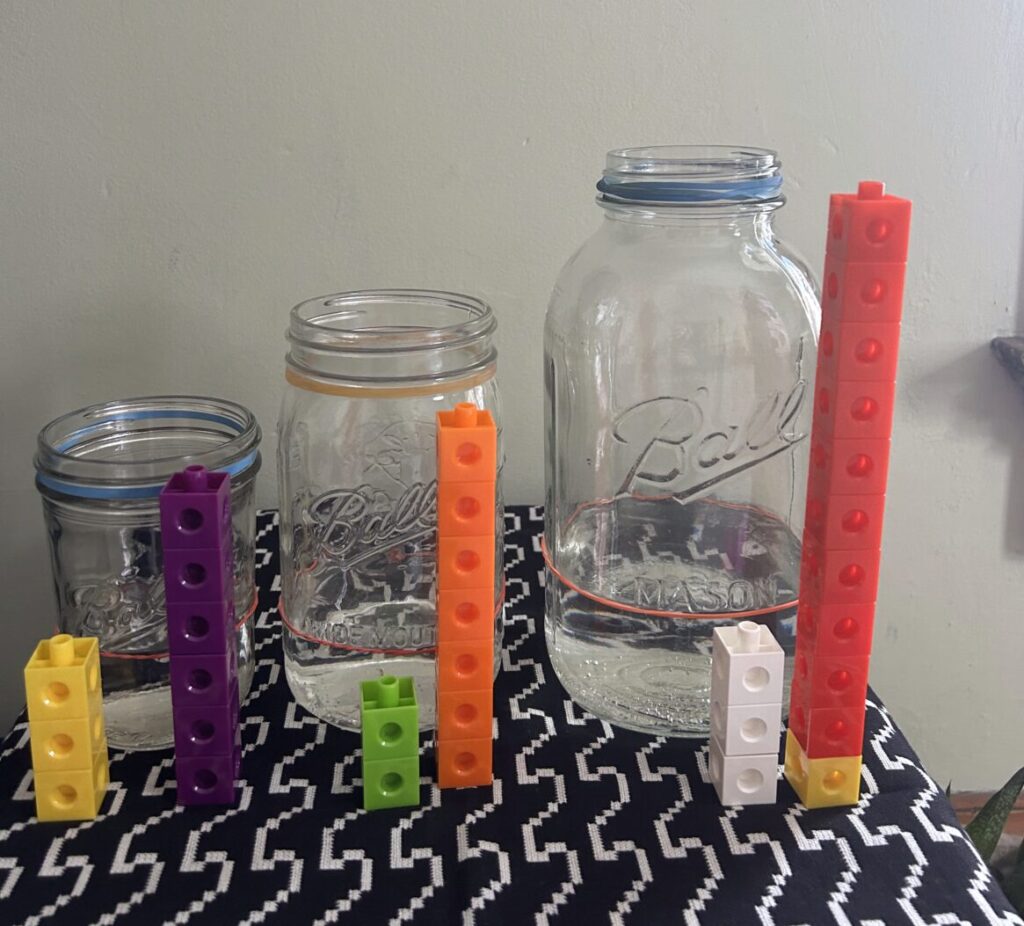Snowy STEM Adventures

“Why is there dirt in the snow?” asks Seana as we hike through some freshly fallen snow speckled with dirt and debris.
“Maybe it blew off of a roof?” Anthony suggests.
“I think it came from the birds and squirrels,” Elijah chimes in.
“Or maybe the wind blew it off of the trees?” guesses Quinn.
These observations spark a lively conversation about where the dirt came from and how it ended up in the snow. The children wonder if they are eating dirt when they sneak a bite of snow, if the dirt will float to the top when the snow melts, and if they will be able to see the dirt more clearly once the snow turns into water.
Eager to discover the answers to these questions, we decide to bring some snow inside and observe it as it melts.
Our goal is to explore the properties of snow, measure its depth, and observe how it changes as it melts. This provides a wonderful context for practicing key math and science concepts such as measurement, comparison, and data collection.

After collecting fresh snow in jars and bringing the jars into the classroom, the children use a measuring stick to measure the depth of the snow in each container (see photo below).
This is a fun, hands-on way to reinforce the concept of measurement. The children measure the snow before and after it melts, then compare the amount of dirt in the water to the amount of snow that they started with.
Through the use of measuring sticks, the children also practice counting while learning about measurement units. They learn that the numbers on the measuring sticks represent how much space the snow is taking up in the jars and begin to grasp the concept of measurement as they develop their number sense.
Their curiosity and questions drive the entire investigation, making it an engaging and meaningful experience for everyone involved.

After measuring the snow in the jars, we place each jar in a different classroom location to see how the snow will melt under different conditions over time. We place some of the jars near sunny windows and others in cooler or darker areas of the classroom.
Then we make predictions about which jar of snow might melt fastest based on its size and location. Making predictions and testing hypotheses is a key part of the scientific method. As they engage in these processes, the children develop problem-solving skills that will be essential to later math and science learning.
As the snow melts and the children record their observations, this period of observation turns into an impromptu lesson about transformation. The children compare the volume of the snow as a solid to its volume as a liquid and discuss the difference between the two states of matter. This lays the foundation for an early understanding of scientific concepts such as melting, temperature, and physical changes in matter.
While measuring the snow at different stages of the melting process, the children also notice that the snow melts at different rates in the different jars. This gives them a real-world context for the concept of comparison. As they discuss terms such as more, less, and the same, they gain a foundational understanding of how to compare quantities.

After measuring and comparing, we stack the math linking cubes pictured above to create a visual representation of the volume of snow in its frozen and melted states. This gives our early learners a rudimentary understanding of what it means to measure.
Through hands-on play with these math linking cubes, the children also begin to understand the numerical value of their measurements. This multi-sensory learning helps them understand early math in a more visual, tactile, and engaging way than traditional worksheets or lessons.
All in all, this snow measurement activity is so much more than a fun experiment. It is an opportunity for our youngest learners to engage in real-world math, build important measurement skills, and make connections between math and science.
Whether it’s measuring snow in its solid and liquid states, making predictions about how much snow will fall, or following animal footprints on a snowy day, winter is the perfect time to integrate math and science into everyday experiences.
We hope you’ll be inspired to embark on some snowy STEM adventures of your own this winter!
interesting
What a great concept.
I like the authentic experience in this lesson. It engages the children through hands-on play in a good space and with materials that they find interesting.
Snowy Stem Adventures gives young children the opportunity to use the scientific method to extend their learning
Fun idea if we get snow this year!